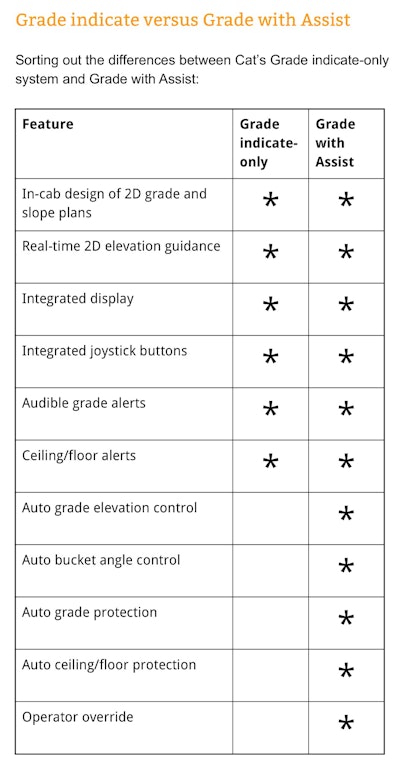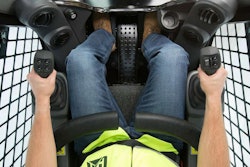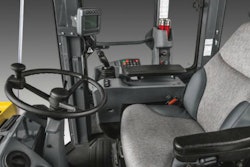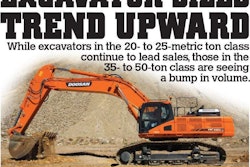
Cat has added a semi-autonomous grade assist system option on top of its indicate-only Grade system on the 323F L excavator, a model introduced last year.
What Cat calls Grade with Assist is available both factory-installed and as a dealer-installed update for 323F machines now in the field. Cat says the system enables operators—no matter what level of experience—to reach target grade as much as 45 percent faster than manual grading.
To use Grade with Assist, an operator enters the target depth into the Cat Grade system and presses the auto button. Assist technology takes over when the cutting edge of the bucket gets within 4 inches of target, locking onto the grade and automatically adjusting boom up/down and bucket in/out movements. From that point on, the operator just controls the stick-in speed using a single lever, achieving grade accuracy within 2 to 3 centimeters.
“This gives you faster final grading, minimizing over dig and protecting the grade,” says Brian Stellbrink, Cat product application specialist, excavators. “With an indicate-only system, operators are trying to minimize over digging, so they go slower.”
The system automates bucket movements to maintain a constant bucket angle throughout the cut. The bucket angle can be adjusted by the operator to match the cutting angle to digging conditions, and the bucket angle can be automatically recalled for subsequent passes. The system prevents the cutting edge from penetrating below grade.
You can also pre-set a ceiling and floor elevation, which prevents any part of the boom, stick or bucket from going above or below the pre-sets, a handy feature when working inside a building, under overpasses or below overhead electrical lines. “The protection is not just for the top of the boom, but for any part of the front linkage, whether the bucket tip or the joint between the boom and stick,” Stellbrink explains.
The operator can override the system at any point using a fingertip trigger on the right joystick. “There are situations where you need to over dig – say you encounter a rock or tree roots,” Stellbrink says. “Just press the override trigger, pop out the obstruction, let off of the trigger and you’re back at your bucket set point.”

Stellbrink says Grade with Assist is a mid-step for contractors hesitating to take the leap from a 2D indicate-only system and a full-blown 3D GPS system. (Cat took a similar toe-in-the-water approach with its Slope Assist on K2 Series dozers, introduced earlier this year.) “We can put it on top of our standard machine that already has an indicate-only system,” Stellbrink says. “It helps meet customers needs based on where they’re at in technology adoption. Declining to give an exact price, Stellbrink did say the cost is “thousands instead of the tens of thousands of a 3D system.”
Cat plans to add Assist to it’s 3D AccuGrade system early next year, which can be layered on top of any 2D systems an owner may already have on a machine. While the 2D Grade with Assist does not require additional hardware, adding Assist to the 3D system will require extra hardware. It takes about six to eight hours to retrofit Grade with Assist on a 2D system.
(Komatsu took a different approach when it introduced its PC210LCi-10 excavator this time last year, using what it called semi-automatic Intelligent Machine Control. Instead of manual input of target grade as on the Grade with Assist 2D system, target grade and project files on the Komatsu system are downloaded either through a thumb drive inserted into the bottom of the in-cab control box or remotely through project partner’s Topcon Sitelink 3D Enterprise program.)
“We’re starting with 2D Grade with Assist, and quite frankly, we feel that’s where most of the customers can benefit,” Stellbrink says. “If you look at the pool of 50,000-pound machine users, we feel that right now the majority of the opportunity is with basic 2D versus full 3D GPS.”
Stellbrink emphasizes that Grade with Assist gives operators the ability to “pull grade through the complete length of a stroke.” Watch the video below for an in-depth look behind the development of this new feature with Stellbrink.









